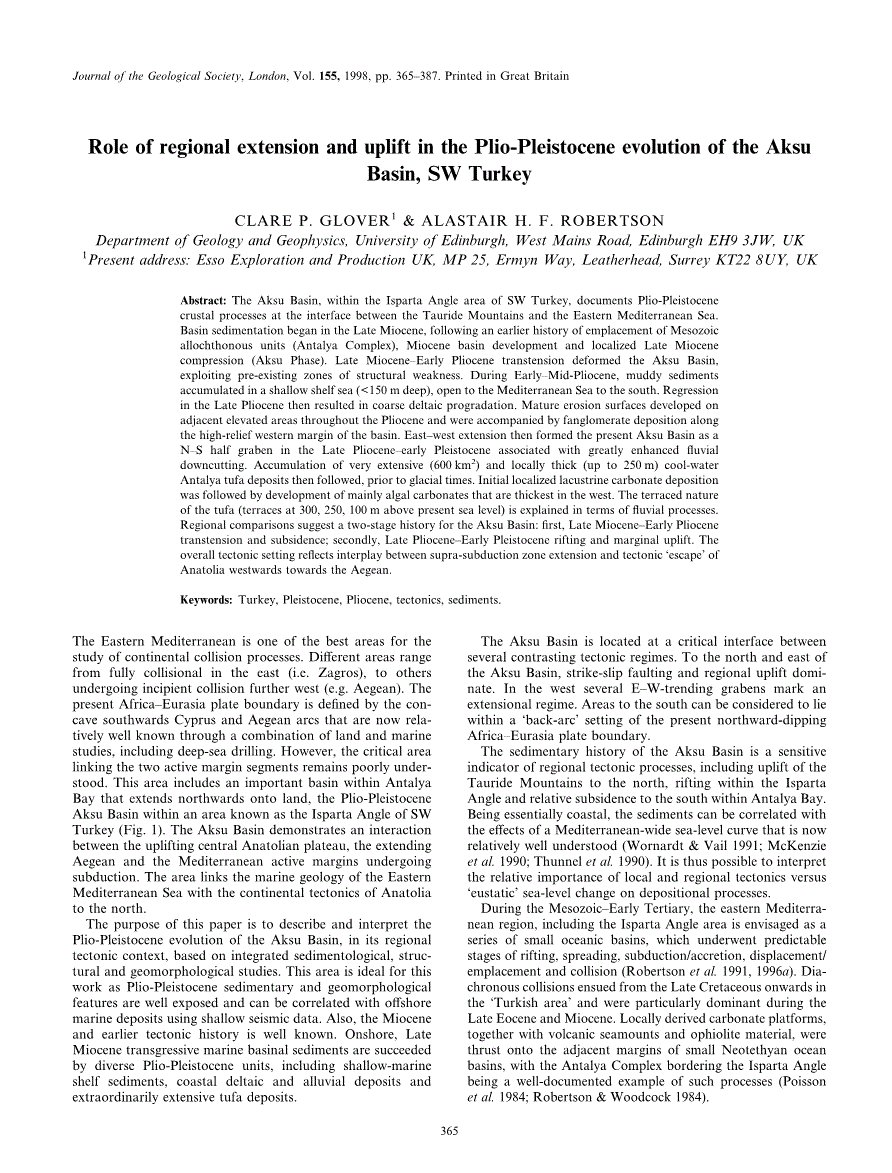Abstract
The Aksu Basin, within the Isparta Angle area of SW Turkey, documents Plio-Pleistocene crustal processes at the interface between the Tauride Mountains and the Eastern Mediterranean Sea. Basin sedimentation began in the Late Miocene, following an earlier history of emplacement of Mesozoic allochthonous units (Antalya Complex), Miocene basin development and localized Late Miocene compression (Aksu Phase). Late Miocene–Early Pliocene transtension deformed the Aksu Basin, exploiting pre-existing zones of structural weakness. During Early–Mid-Pliocene, muddy sediments accumulated in a shallow shelf sea (<150 m deep), open to the Mediterranean Sea to the south. Regression in the Late Pliocene then resulted in coarse deltaic progradation. Mature erosion surfaces developed on adjacent elevated areas throughout the Pliocene and were accompanied by fanglomerate deposition along the high-relief western margin of the basin. East–west extension then formed the present Aksu Basin as a N–S half graben in the Late Pliocene–early Pleistocene associated with greatly enhanced fluvial downcutting. Accumulation of very extensive (600 km2) and locally thick (up to 250 m) cool-water Antalya tufa deposits then followed, prior to glacial times. Initial localized lacustrine carbonate deposition was followed by development of mainly algal carbonates that are thickest in the west. The terraced nature of the tufa (terraces at 300, 250, 100 m above present sea level) is explained in terms of fluvial processes. Regional comparisons suggest a two-stage history for the Aksu Basin: first, Late Miocene–Early Pliocene transtension and subsidence; secondly, Late Pliocene–Early Pleistocene rifting and marginal uplift. The overall tectonic setting reflects interplay between supra-subduction zone extension and tectonic ‘escape’ of Anatolia westwards towards the Aegean.





